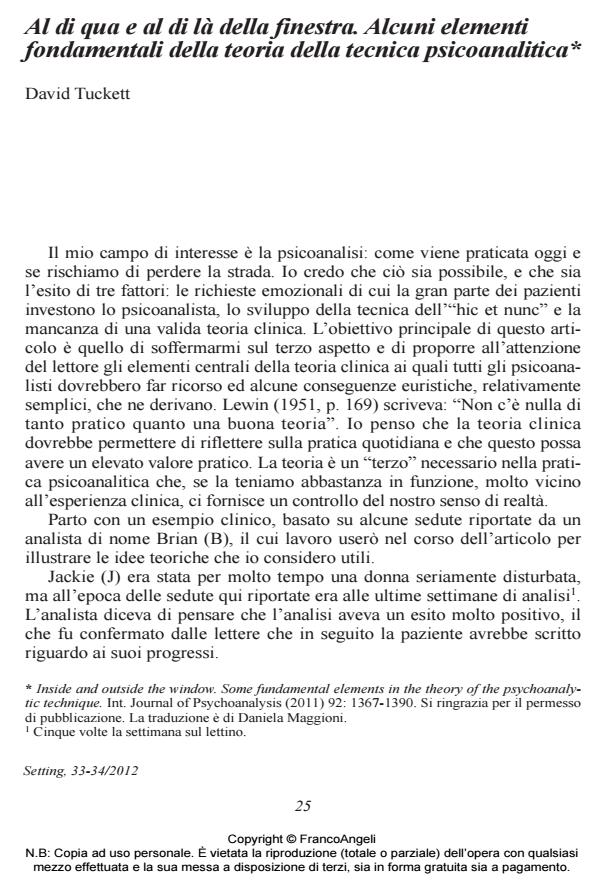Al di qua e al di là della finestra. Alcuni elementi fondamentali della teoria della tecnica psicoanalitica
Journal title SETTING
Author/s David Tuckett
Publishing Year 2014 Issue 2012/33-34
Language Italian Pages 32 P. 25-56 File size 126 KB
DOI 10.3280/SET2012-033002
DOI is like a bar code for intellectual property: to have more infomation
click here
Below, you can see the article first page
If you want to buy this article in PDF format, you can do it, following the instructions to buy download credits

FrancoAngeli is member of Publishers International Linking Association, Inc (PILA), a not-for-profit association which run the CrossRef service enabling links to and from online scholarly content.
The underlying concern of this paper is that psychoanalysis as practised today is in ranger of losing its specificity and losing its way. The author suggests this is possible for three reasons: the problems analysts face in responding to the strong emotional demands the great majority of patients necessarily place on them, the unintended consequences of apparent success of ‘here and now technique’ and the absence of good clinical theory. The paper mainly discusses the author’s ideas about some core elements of the clinical theory that all psychoanalysis must use when they are working and proposes (under the risk of being facile) some relatively simple heuristics related to them which are meant to be helpful. Recalling Kurt Lewin’s maxim that ‘there is nothing so practical as a good theory’ he will suggest that continuous reflection on how one is using theory in daily practice is highly pratical if the theory is good enough. Theory in fact is a necessary ‘third’ in psychoanalytic practice which, if kept in sufficient working order close enough to clinical experience, provides an ongoing and very necessary check on our sense of reality. But, of course, as a third it can, like reality itself, be the focus of both love and hate with equally problematic consequences. The paper starts with a clinical example of a difficult but apparently successful analysis reaching its and which will be used throughout the paper to illustrate and elaborate the suggested theoretical ideas.
David Tuckett, Al di qua e al di là della finestra. Alcuni elementi fondamentali della teoria della tecnica psicoanalitica in "SETTING" 33-34/2012, pp 25-56, DOI: 10.3280/SET2012-033002